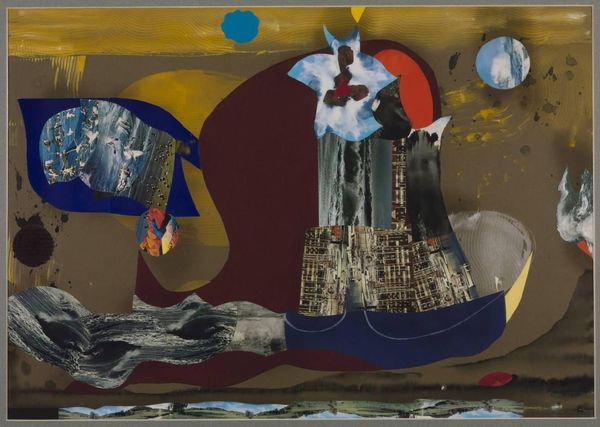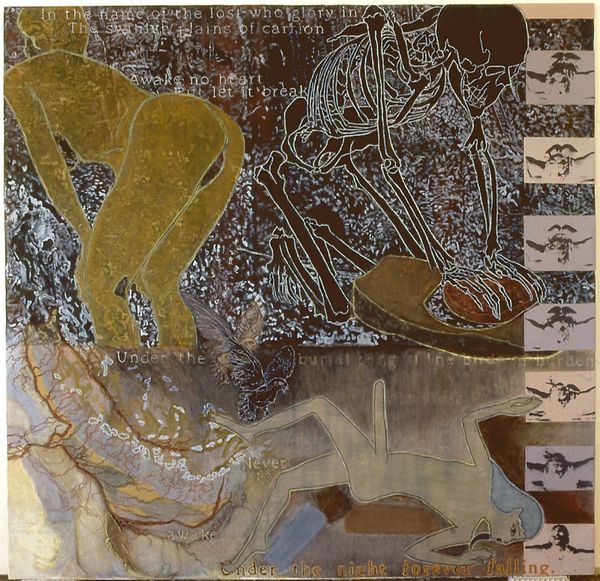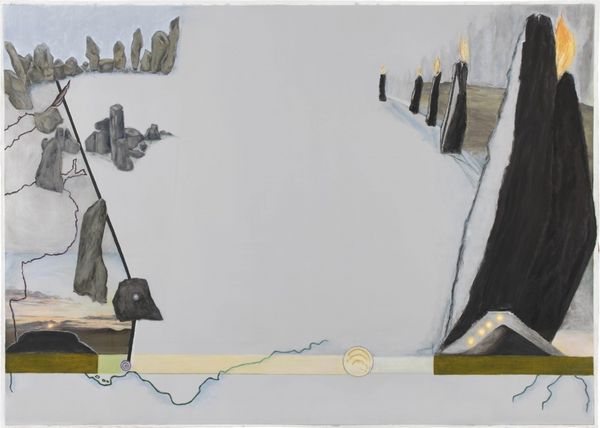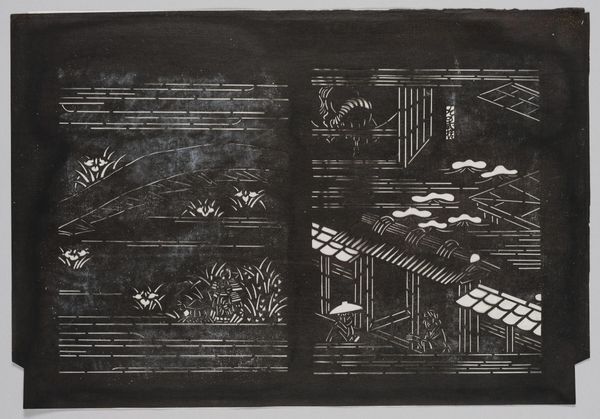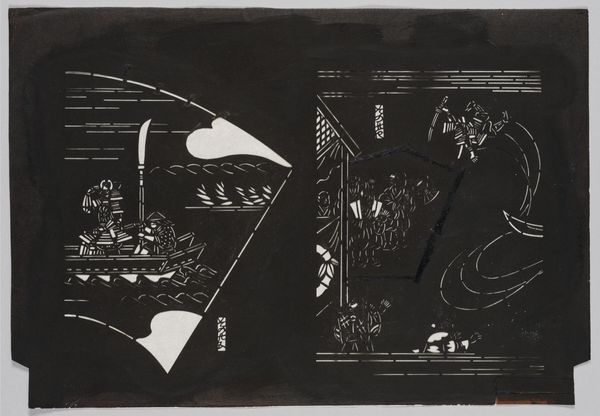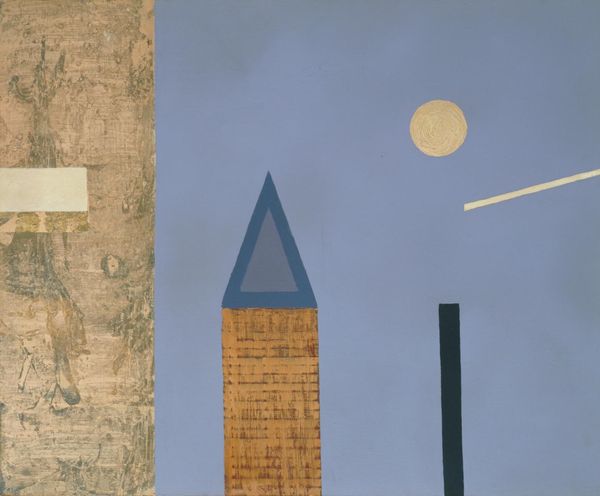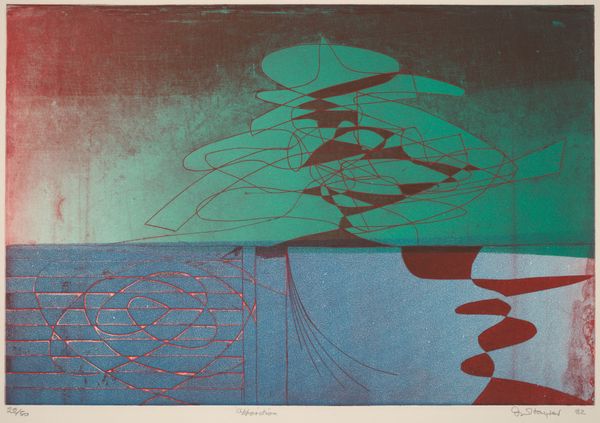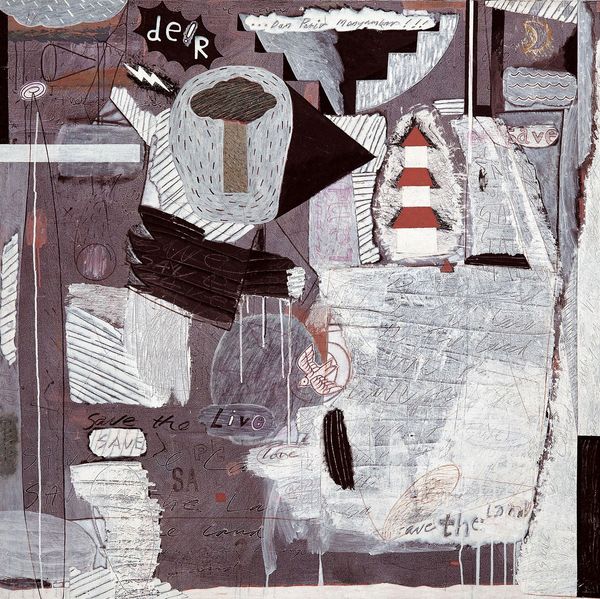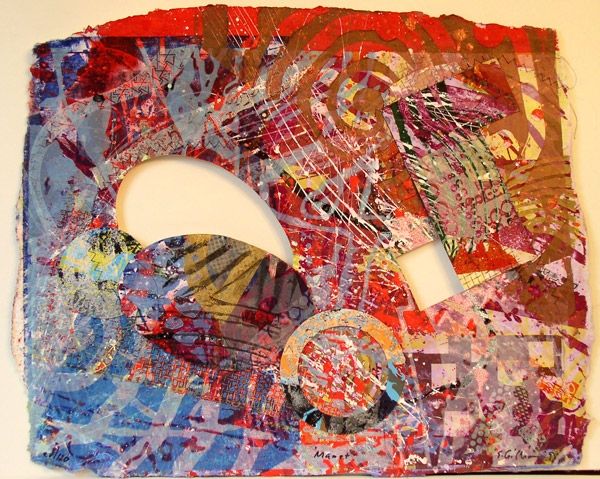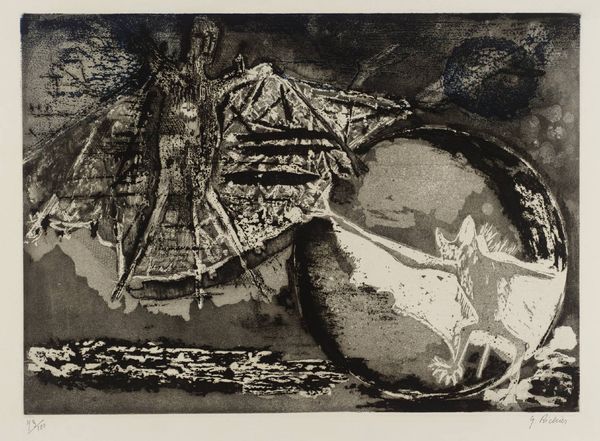
Dimensions: support, secondary: 558 x 813 mm frame: 594 x 849 x 23 mm
Copyright: © The estate of Sir Roland Penrose | CC-BY-NC-ND 4.0 DEED, Photo: Tate
Curator: Roland Penrose, born in 1900, created this intriguing collage, "Magnetic Moths." It resides here at the Tate. Editor: It strikes me as a curious dreamscape—disjointed, yet strangely evocative. The contrasting images pulled together feel almost psychologically revealing. Curator: Collage was indeed embraced by the Surrealists for its ability to juxtapose disparate realities, inviting subconscious interpretations. The Eiffel Tower recurs in the composition. Editor: Repetition creates emphasis, giving the Eiffel Tower symbolic weight. Perhaps it represents the lure of modernity, or even the artist's personal connection to Paris and the Surrealist movement. Curator: Exactly. And the dark background might signify the unconscious from which these magnetic "moths"— these alluring images—are drawn. I think that viewers are equally drawn to the images like moths to a light. Editor: It's a potent interplay. The title invites us to consider how images themselves possess an inherent power of attraction, shaped by cultural associations. Curator: Penrose clearly understood the symbolic language of visual culture. Editor: A fascinating exploration of how imagery shapes our perceptions.
Comments
Join the conversation
Join millions of artists and users on Artera today and experience the ultimate creative platform.
tate 6 months ago
⋮
Roland Penrose was probably the most important figure in British Surrealism. He provided a vital link with Parisian artists such as Pablo Picasso, Max Ernst and Man Ray.Penrose invented the ‘post-card sculpture’,in which a new reality is created by the incongruous juxtaposition of views of diverse real places. In this mysterious image, views of two landmarks in Paris – the Eiffel Tower and the Opera House – have been transformed into a mechanized moth drawn, fatally, towards a candle flame. Gallery label, August 2004
